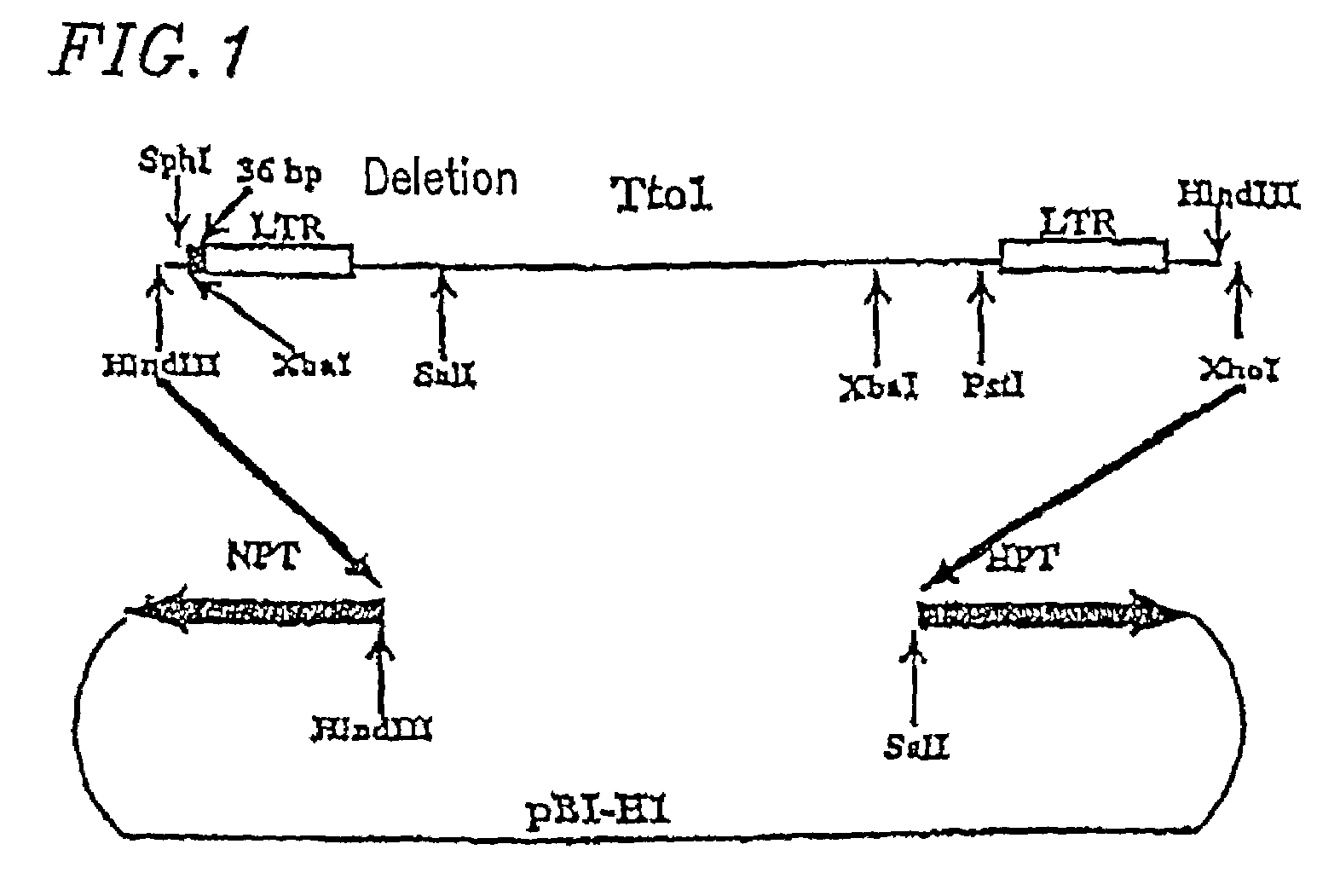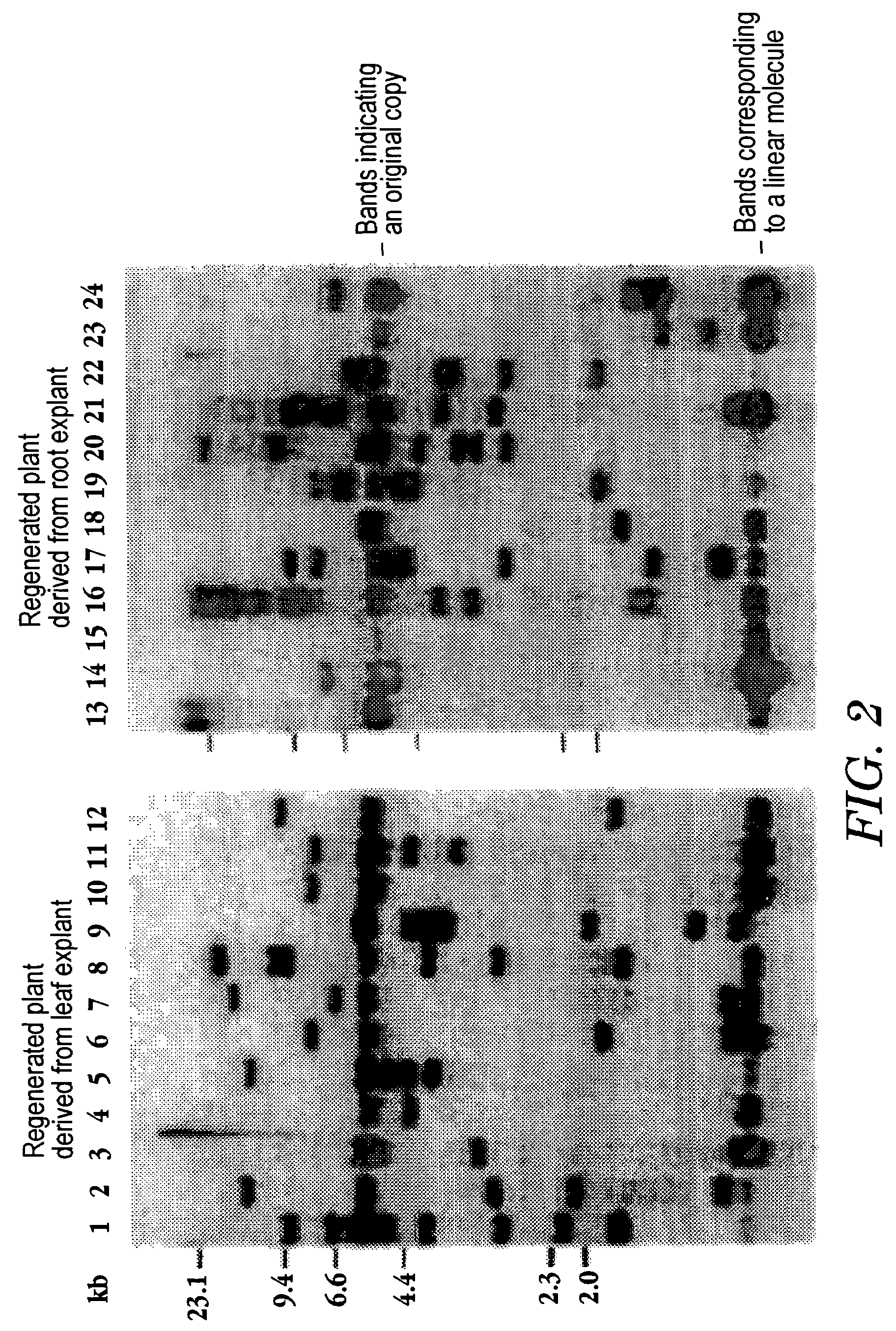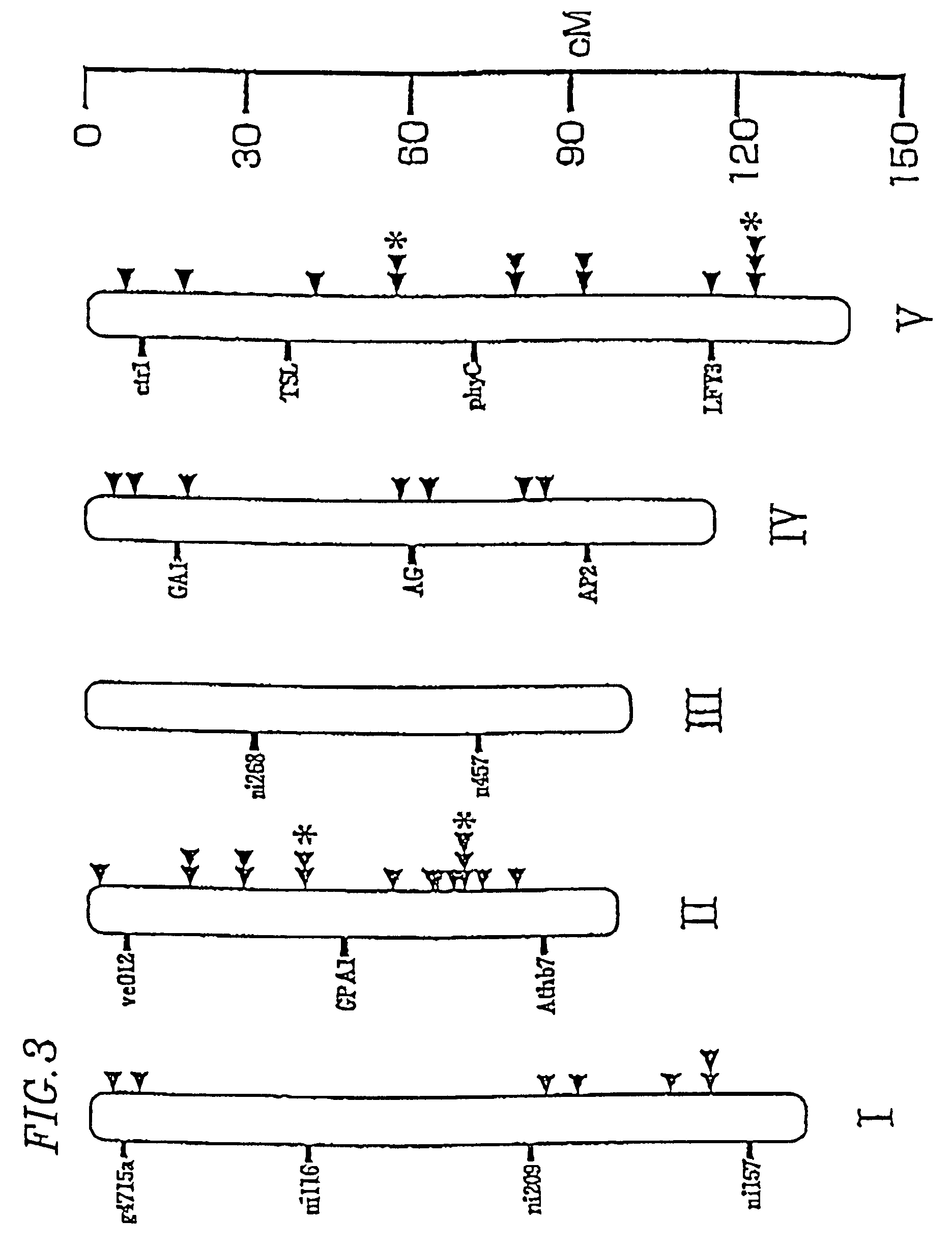Method for disrupting genes using tobacco retrotransposon
a retrotransposon and gene technology, applied in the field of gene disruption and gene isolation by transposon tagging, can solve the problems of high frequency of transposition, t-dna does not substantially function as a tag, and the disruption of a gen
- Summary
- Abstract
- Description
- Claims
- Application Information
AI Technical Summary
Benefits of technology
Problems solved by technology
Method used
Image
Examples
example 1
Construction of the Binary Plasmid pBlTto1 (−36) and Introduction into Agrobacterium
[0039]FIG. 1 shows a structure of pBTto1 (−36). A 5′ portion of pSKTto1 (−36) (Hirochika et al., 1996, Plant Cell, 8, 725–734), which is a clone of Tto1 as previously reported, was excised with HindIII and PstI, and a 3′ portion was excised with PstI and XhoI. The resultant Tto1 fragments were inserted into the binary vector pB1101-Hm digested with HindIII and SalI (Akama et al., Plant cell Rep. 12, 7–11 (1992)), thereby constructing the binary vector pBITto1 (−36) into which Tto1 was integrated. The thus-constructed plasmid was introduced into Agrobacterium tumefaciens strain EHA101 by electroporation (Hood et al., J. Bacteriol. 168, 1291–1301 (1986)). The strains into which Tto1 was introduced were screened in LB agar medium (10 g / l Bacto Tryptone (manufactured by Difco), 5 g / l Bacto Yeast Extract (manufactured by Difco), 10 g / l NaCl, 15 g / l Bacto Agar (manufactured by Difco), 50 μg / ml kanamycin s...
example 2
Infection of Plants
[0040]Arabidopsis ecotype Wassilewskija (WS) was used in all experiments described below. A root or a hypocotyl of Arabidopsis was infected with Agrobacterium in accordance with the method of Akama et al. (1992) (Plant Cell Rep., 12, 7–11). The medium used in this example is described in Valvekens et al., PNAS, 85, 5536–5540 (1988). Briefly, pieces of hypocotyl and root of sterilely grown Arabidopsis plants, were cultured in CIM (callus inducing medium, containing 3.19 / 1 Gamborg's B5, 20 g / l glucose, 0.5 g / l MES-KOH (pH 5.7), 0.5 mg / l 2,4-D, and 0.05 mg / l kinetin, and 5 g / l Gellan Gum) at 22° C. for about 10 days (in the light for 16 hours and in the dark for 8 hours). Thereafter, the hypocotyl and root pieces were infected with Agrobacterium. The medium was replaced with new CIM. The hypocotyl and root pieces were co-cultured with Agrobacterium for three days.
[0041]After Agrobacterium was washed out, the above-described root or hypocotyl pieces were cultured in S...
example 3
Confirmation of Transposition by Southern Hybridization
[0042]DNA was prepared from the plant with a disrupted gene, obtained in Example 2 by cetyltrimethyl ammoniumbromide (CTAB) precipitation (Murray and Thompson, Nucleic Acids Res. 8, 4321–4325 (1980)). The isolated DNA was digested with the restriction enzyme EcoRV, followed by agarose gel electrophoresis. The DNA was transferred to a nylon membrane. DNA fragments derived from the Tto1 region, which had been prepared from plasmid pSKTto1 (−36), were labeled with 32P-dCTP, followed by Southern hybridization as described in Hirochika, EMBO J., 12, 2521–2528 (1993). The fragments were examined for the copy number of T-DNA by Southern hybridization using a hygromycin-resistance gene labeled with 32P-dCTP (Multiprime DNA labeling system, Amersham Pharmacia Biotech) (Hirochika, EMBO J., 12, 2521–2528 (1993)).
[0043]The copy number of Tto1 was expected to be greater than the copy number of introduced genes after transposition had occurre...
PUM
| Property | Measurement | Unit |
|---|---|---|
| Fraction | aaaaa | aaaaa |
| Fraction | aaaaa | aaaaa |
| Fraction | aaaaa | aaaaa |
Abstract
Description
Claims
Application Information
 Login to View More
Login to View More - R&D
- Intellectual Property
- Life Sciences
- Materials
- Tech Scout
- Unparalleled Data Quality
- Higher Quality Content
- 60% Fewer Hallucinations
Browse by: Latest US Patents, China's latest patents, Technical Efficacy Thesaurus, Application Domain, Technology Topic, Popular Technical Reports.
© 2025 PatSnap. All rights reserved.Legal|Privacy policy|Modern Slavery Act Transparency Statement|Sitemap|About US| Contact US: help@patsnap.com



